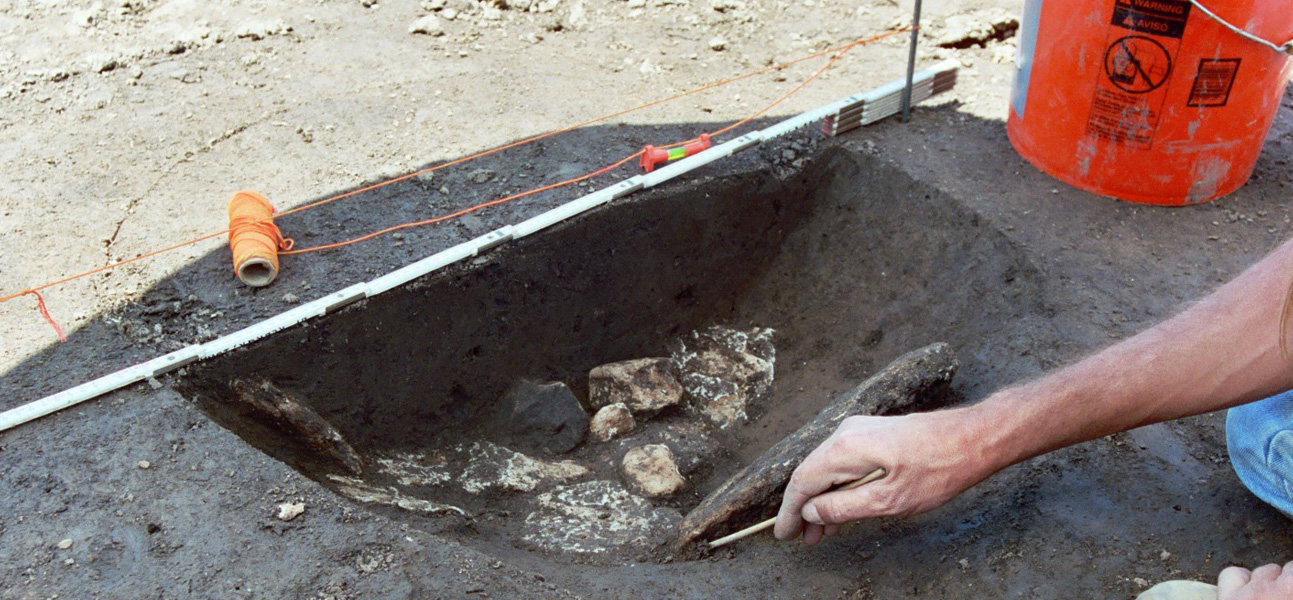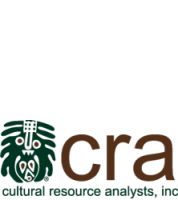
02 May Excavations at the Carskadon Site
Carskadon was another site investigated during the course of the AOS project. This site was periodically inhabited over the last 2,000 years with the largest occupation occurring during the Middle Woodland (circa A.D. 1–250). The Middle Woodland in this portion of Missouri is commonly referred to as Havana-Hopewell and is well known in archaeological circles for its elaborate mortuary behavior, the building of mounds and geometric earthworks, and the manufacture and exchange of non-local raw materials and finished objects. This characterization of Havana-Hopewell emphasizes societal-level behavior that includes large-scale (multi-family or clan) work efforts like the building of earthworks as well as the formation of more pronounced social differentiation and the rise of high status individuals. It was during this time that non-local raw material like certain rocks, minerals, and cherts were highly-sought after and used in the manufacture of their everyday tools along with making personal ornaments and ceremonial objects. Religion was not only visible in the burial of their dead, but can also be seen as decoration on some of their cooking and serving pots. Some researchers believe that religion in conjunction with elaborate ceremonialism is what tied various Havana-Hopewell individuals and communities together beyond the normal bonds of familial ties.
Our work at Carskadon resulted in the recovery of some of the same traits mentioned above, but what makes Carskadon so interesting is the immense amount of material that was collected and analyzed that relates more to the lives of the people that lived during this complex time. In other words, Carskadon provided an opportunity for researchers to examine the remains of past activities and tasks associated with the daily lives of the inhabitants and not rely on just the highly visible and well-known pan-regional traits previously mentioned.
For example, why did Havana-Hopewell people live at Carskadon? To begin, this site was ideally located within the immediate landscape. Situated at the base of a north to south trending bluff-line of the Mississippi floodplain, the site allowed for both upland and riverine resources to be exploited. In the uplands, resources such as bison, deer, turkey, and prairie chicken were plentiful as were certain nut bearing trees like hickory. Riverine or floodplain resources included water fowl, various catfish, drum, buffalo, beaver, numerous species of reptiles and turtles, and the remains of some cultivated plants like marshelder, goosefoot, and knotweed.
Within the remains of old cooking and trash pits at the site, we were able to identify the remains of all these plants and animals. Of note concerning the animals represented at the site was the presence of several dog burials. Analysis of the dog remains indicated a variety of uses: pack animals; hunting companions; and as a food source. While abundant resources were a prime reason for living here, it is also highly likely that this area was chosen given its higher elevation. In other words, this portion of the floodplain tended not to get flooded as often as other locations. Additionally, raw material for many of the stone tools found at the site originated within the bluff-line and consisted of whitish-colored Burlington/Keokuk chert.
Like at the Baxter Lake site, we were able to infer how the people may have lived and why they chose the location of the Carskadon site based on the analyses of the site.



